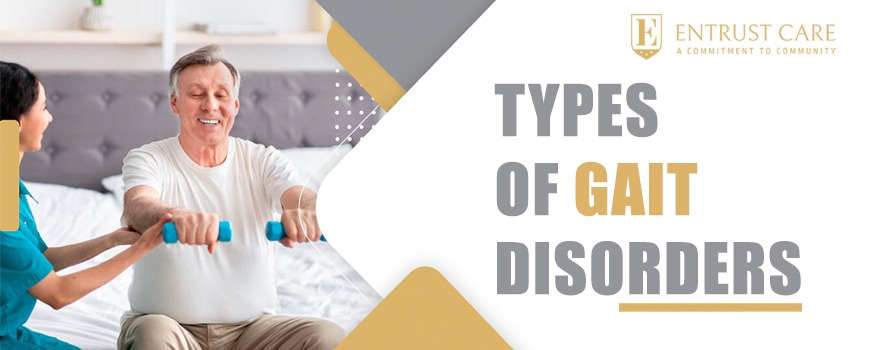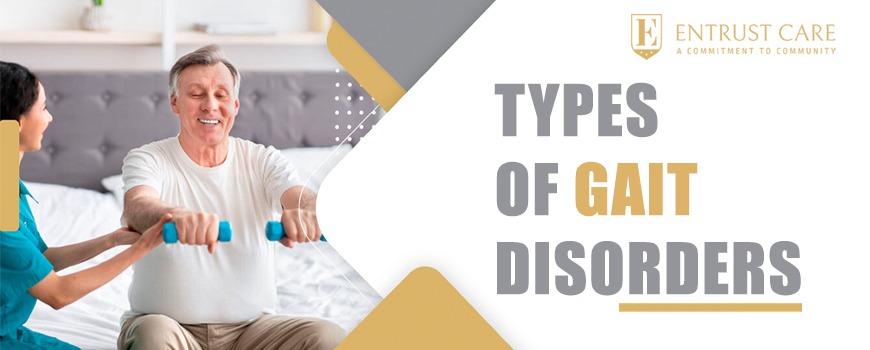Before we discuss what gait disorders are, it is important to understand what gait is! A person’s pattern of walking is referred to as gait. Our walking pattern involves a coordinated and balanced movement of our body muscles so that we are impelled forward in a rhythm. This rhythmic forward movement is also known as the stride.
Walking or running involves complex actions of various parts of our body such as the brain, muscles, heart, lungs, bones, and such. There can be numerous reasons that might cause you an abnormal gait.
Gait disorders are commonly found in older adults. It can also be an underlying symptom of any other condition. The following are some of the common causes of abnormal gait:
- Stroke
- Neurological conditions
- Inner ear disorders
- Foot conditions
- A degenerative disease
- The cause can be even an ill-fitting shoe.
We hope by now you have a clear idea about what is gait disorder and about the causes that may result in gait disorder. Now let us take a look at various types of gait disorders and how you can treat them.

Scissors Gait
In Scissors Gait, a person’s hips, legs, and pelvis will be flexed to various degrees and they appear to be crouching. It has the name Scissors Gait because a person with this disorder walks with their knees and thighs in a cross or hit position like a scissor while walking.
It will be difficult for them to take fast and long steps. People with spastic cerebral palsy were often observed to have this type of gait disorder.
Hemiplegic Gait
In hemiplegic gait, a person’s elbow is flexed, the shoulder is adducted, the forearm is pronated, and fingers are flexed, also their knee is held in an extension and flexed angle. In hemiplegic gait disorder, one part of the body will be paralyzed due to a corticospinal tract lesion.
It usually has a prolonged swing phase and decreased stance phase of the paretic side. Also, they have a shorter stride length and decreased walking speed.
Ataxic Gait
People who suffer from ataxic gait find it hard to walk on a straight path. So, they rather walk staggering in a different direction due to cerebellar damage. This might make people feel that you are stumbling. Studies have shown that impairment in the coordination across the joint of one leg or two legs in ataxic gait.
Alcohol intoxication can also be a reason for ataxic gait and once you are sober it will get better. Even some strong medication can also cause ataxic gait.
Parkinsonian Gait
Parkinsonian gait is usually found in the later stages of Parkinson’s disease. People who suffer from such a condition can make only shuffling and small steps. And they also find it difficult to lift their feet. Parkinsonian gait is considered to have a major negative impact on a person suffering from Parkinson’s disease compared to its other symptoms.
There can be episodic or continuous changes in the gait. Episodic changes can happen randomly and suddenly such as freezing of gait. Continuous changes can happen all the time such as walking slower than normal.
Neuropathic Gait
Also known as steppage gait is usually seen in patients who have weakness of foot dorsiflexion(foot drop). This gait is caused due to the attempt of lifting a foot higher during walking so that they don’t have to drag it on the floor.
Myopathic Gait
Myopathic gait also known as waddling gait is another form of gait abnormality. Due to the weakness in the pelvic girdle of the proximal muscles waddling motion is caused. Congenital hid dysplasia, spinal muscular atrophy, pregnancy, and muscular dystrophies can be some conditions associated with myopathic gait.
Who Is at More Risk?
Generally, gait disorders are more commonly found in elderly people. It is something that increases with age and the elderly are more likely to undergo conditions that cause gait disorders. And as we grow old we have weaker muscles, poor balance, and weak muscle coordination compared to young people.
How to Treat Gait Disorders
If you are someone facing difficulty walking, then you should definitely consider consulting a doctor. Make sure you are seeing a specialist who can determine the cause of your gait disorder.
Once your doctor evaluates your condition and results they can plan proper treatments to manage your condition. Some of the above-mentioned gait disorders can be managed with surgery or medication. In some cases, physiotherapy and exercise can be a lifesaver to improve your overall health. Here at Entrust Care, we provide expert care for those who suffer from such disorders. Give us a call today to know more.

